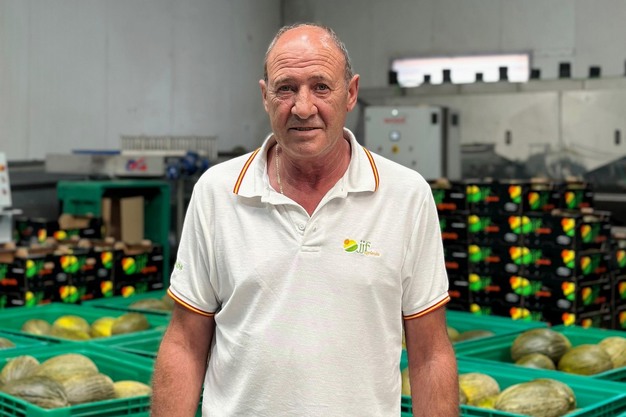With the first half of the season almost complete, melon and watermelon producers in the Spanish region of La Mancha remain pessimistic. Prices at the source are not covering their production costs due to a combination of circumstances that have aggravated the situation from the very beginning.
"The disastrous melon and watermelon season in La Mancha is bound to improve, because it can't get any worse," says Juan Pedro Madrigal, Manager of Agrícola JJF, one of many companies in La Mancha affected by a combination of factors that have ruined the first half of the season.
 © Agrícola JJF
© Agrícola JJF
"Right now, it's hard to imagine the situation improving, but if things don't stay this bad, the only thing that can happen is perhaps a slight recovery by the end of August. At that time, there will be fewer hectares of melon and watermelon, as not as many late varieties tend to be sown. This could stimulate demand. We'd also need a combination of hot weather and people wanting to eat these products. The late melon and watermelon production could thus stimulate demand," says the manager.
"Until late September, there is still time for the situation to recover. We won't achieve reasonable results, but every little helps. I am hopeful that the quality of late varieties will be good and that we'll be able to get better prices."
"The situation is so severe that watermelons are sold for 10 cents per kilo at the source, when production costs amount to 18, and melons cost 12 cents, when production costs reach 30 cents per kilo," says the manager.
 © Agrícola JJF
© Agrícola JJF
"A combination of many factors has spoiled the season. Spring rains delayed the planting in Murcia, Almeria, Seville, and Cordoba, so those productions have overlapped with La Mancha's. That's how the disaster started," says Madrigal.
When asked about how to avoid such a season, Madrigal believes that "by planting less, there would be better chances, but in the end it is the weather that makes and breaks things." Also, "we can't do anything to prevent Cordoba, Murcia, or Seville's campaigns from being delayed, or for the summer to be hotter or cooler on the continent. There are so many factors, and in the end, a combination of them has created a perfect storm. Last year we had a lot of melon and watermelon, but it was hot in Europe and everything was sold."
Looking ahead to next season, Madrigal says: "I think less watermelon will be sown because there are starting to be some water supply issues and watermelon consumes a little more water than melons."
The options in La Mancha are "fresh produce, vineyards or cereals, but I think that by sowing less we could perhaps earn more and save water; but we can't reduce sowing too much, because many people work in this sector; there are many direct and indirect jobs linked to transport, fertilizers, or phytosanitary products. It is a sector that generates a lot of jobs, so there is no easy solution," says the manager.
For the last 16 years, Agrícola JJF has been sowing and marketing around 4 million kilos of watermelon and 3 million of melon per year. This fruit is mostly intended for national supermarkets and wholesalers.
For more information:
Juan Pedro Madrigal
Agrícola JJF
Tel.: +34 626 57 82 76
[email protected]
www.agricolajjf.es
